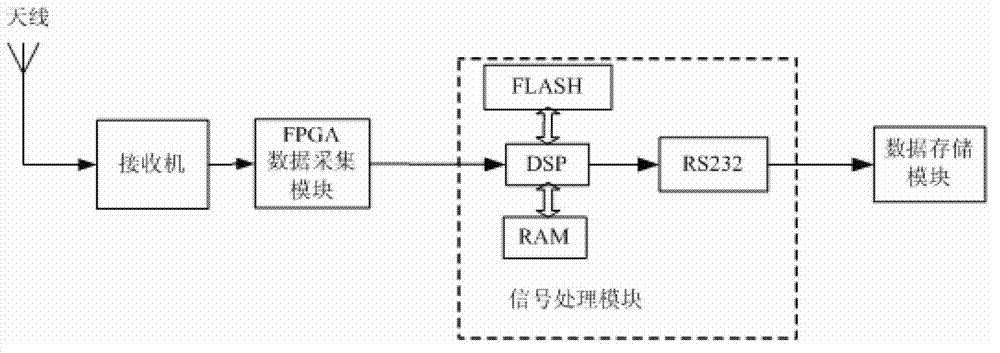Joint estimation method of timing frequency offset of satellite borne automatic identification system (AIS) signals and implementation system thereof
A technology of joint estimation and signal timing, applied in transmission systems, digital transmission systems, radio transmission systems, etc., can solve the problems of inapplicability to spaceborne AIS receivers, influence of receiver detection performance, and low accuracy.
- Summary
- Abstract
- Description
- Claims
- Application Information
AI Technical Summary
Problems solved by technology
Method used
Image
Examples
Embodiment
[0062] Embodiment: a kind of space-borne AIS signal timing frequency offset joint estimation method is characterized in that it comprises the following steps:
[0063] ① Receive the radio frequency signal transmitted by the AIS system of the ground ship by the antenna, and input it to the receiver;
[0064] ②The receiver demodulates the received RF signal into a baseband signal and inputs it to the FPGA data acquisition module;
[0065] ③ The FPGA data acquisition module performs analog-to-digital conversion on the received baseband signal to obtain a digital baseband signal and transmit it to the signal processing module;
[0066] ④The signal processing module processes the received digital baseband signal, obtains the correct AIS ship information and transmits it to the data storage module;
[0067] ⑤ Finally, the data storage module stores the received AIS ship information.
[0068] Described step 4. the method for data processing is made of the following steps:
[0069]...
PUM
 Login to View More
Login to View More Abstract
Description
Claims
Application Information
 Login to View More
Login to View More - R&D
- Intellectual Property
- Life Sciences
- Materials
- Tech Scout
- Unparalleled Data Quality
- Higher Quality Content
- 60% Fewer Hallucinations
Browse by: Latest US Patents, China's latest patents, Technical Efficacy Thesaurus, Application Domain, Technology Topic, Popular Technical Reports.
© 2025 PatSnap. All rights reserved.Legal|Privacy policy|Modern Slavery Act Transparency Statement|Sitemap|About US| Contact US: help@patsnap.com



